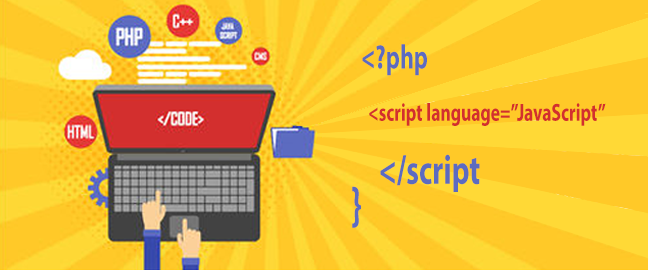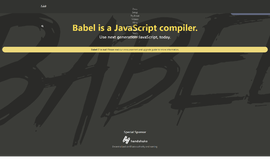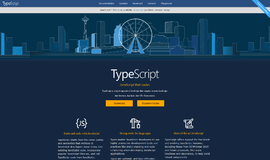Qualities of a good client-side Javascript framework
We all know that choosing the best framework for your project depends upon the project. That's why despite the claims of most framework creators that their framework is the "ultimate" solution, the fact remains that all frameworks have their own strengths and weaknesses. How well they work as a framework depends on their design and their capabilities.
Choosing the right client-side framework is important to providing the best responsive user experience possible. But how do you choose the right framework? I recommend looking through the essential qualities that every framework offers and calculating how they matchup against the requirements of your project.
Size
A bigger or smaller framework isn’t always necessarily better for the project. In most cases, the smaller the framework, the faster the application will be because there’s less overhead. A small framework can also provide more developer versatility since they’re not tied down by templates and they have some control in shaping the architecture.
But when a framework is too small, you might end up using a lot of boilerplate code—a common problem experienced by Backbone.js and Mithril users. Having all that excess code would slow down your application, which defeats the purpose of using a lightweight framework for speed. Yes, a more experienced developer would be able to get around that problem but another issue that could arise with using a small framework is you might need to download more tools and libraries to complete your project. Again, this adds to the overhead, affecting speed and performance.
Bigger frameworks are bulkier but usually provide you with the complete package. The functionality you need is already there and coding would mostly be a matter of filling in blanks. Furthermore, larger frameworks often come with more code support, templates, and libraries that you need to create an application. More functionality also means it’s easier to create more complex projects because there’s an extensive architecture in place that you can build on.
So when is size a factor in choosing the right framework? In most cases, the size of the framework is proportional to the size of the project. Single page apps, widgets and plugins can benefit from small or micro frameworks like Mithril or Backbone.js. If you’re handling sites that require a lot of content exchange and processing, beefier frameworks such as Angular or Ember would be a better choice.
Community
A bigger community often means more support with better and more detailed documentation. But this is conditional upon the community being active and engaged.
With more and more developers relying on frameworks, community support surrounding a particular framework is big an asset. Community support also helps ensure that the content is up to date, forcing the framework to remain relevant and support future trends.
That’s why it’s always a good sign when you see a framework getting a lot of queries on GitHub and StackOverflow, or that they regularly update their documentation. This is one of the reasons why Angular, despite its complexity, continues to be a popular choice among developers. If you have a question about the framework and you need help, there’s going to be community for you to go to.
Another thing you need to look into when considering the community behind a framework is its cohesiveness. A cohesive community can do more in ensuring the consistent and reliable support for a framework. When the community is fragmented, the framework can lose direction in providing solutions for its users. This is one of the concerns users have with React.js, how its fragmented community might go the way of jQuery plugins.

Learning curve
Ideally, a framework should be easy to learn and easy to use. At first glance, it’s kind of counterintuitive to use a framework that’s difficult to learn. But sometimes a steep learning curve can be beneficial if it forces the developer to code properly and make the most out of the features of the framework.
Smaller frameworks are often easier to learn, but might not necessarily suit your needs. Larger, more complex frameworks generally would have a steeper learning curve, especially those that follow strict coding rules and their own jargon. What contributes to the steep learning code of large frameworks is the number of functionalities you have to learn and the libraries you have to be familiar with, which can complicate the process.
But with more features comes more power and capability. Once you’re well versed with the framework and libraries, it eventually reduces the need to do any solid coding. Following strict coding rules also makes the code more consistent, making it easier to debug and test, minimizing incidents of error, and making it easier to update or adapt your code if necessary.
Frameworks help make coding easier but it’s not an excuse for lazing coding. Yes, frameworks do allow newbie developers to build complex apps faster but skill and experience are still essential if you want to get the most out of them.
Libraries
Smaller or fewer libraries attached to a framework usually makes it faster and the number of libraries attached to a framework doesn’t automatically translate to increased functionality. What matters is the content, quality of the library, and how you use it within the framework. Your choice of framework might ultimately rest on how complete the library is, how familiar you are with the library and how useful that library will be for your project.
Fortunately, almost all frameworks makes use of jQuery or libraries adapted from jQuery, mainly because it provides cleaner API than native DOM code. This cuts down on the amount of time you need to spend learning. In addition to JQuery, there are other libraries like Telerik Kendo UI that allow you to do more like UI components, widgets and more.

Data binding
What used to be a novelty is now an essential feature and data binding is practically a requirement. With the trend going towards user generated content and data, data binding ensure that data is displayed and updated automatically without affecting user experience.
Ideally, the data binding has to be direct and straightforward. But selecting a framework based on its data binding capability would depend on the structure of the data flow and the type of content you expect your application to handle.
Templating versus versatility
Ideally, a framework should be large enough to have the functionality that you need but also small enough to give you some versatility.
The templating options that come with larger frameworks make the development process faster, especially if the project would be dealing with mainly standard functions and features. But the problem with templates is they can be limiting, especially if they’re deeply integrated with the framework.
Smaller frameworks offer more versatility, especially for developers who want to define their own processes, data flow, and component function. But all that freedom and versatility can be limiting, especially for inexperienced developers.
Debugging and testing systems
The framework you choose should make it easy for you to test. Smaller frameworks are easier to debug because they’re simpler. Frameworks with rigid structures and coding rules are often times, easier to debug because they follow a clear pattern.
Bigger frameworks can sometimes be more difficult to debug especially if the internal features of that framework are dependent on one another. Experience and good coding habits become more important, especially with complex frameworks.
Native app development support
We’re seeing the rise of more and more frameworks providing cross platform support, which allows developers to create native or near native apps. Examples including Javascript Native, React Native and NativeScript are all supported by their respective frameworks and libraries. Using a framework that’s conducive to cross platform development or that has its own native app development tools can greatly reduce the learning curve, effort and time.
Server side framework compatibility
Your choice of framework might also be affected by what server side framework you’ll need to use. It often helps to work with established stacks, you’ll get more support and often there are already tools in place to help make the integration easier.
There’s also the option of working with a complete application platform like Meteor. But, again, depending on the nature of the project, a framework like Meteor might not be the best choice. However, we’re starting to see Meteor evolve to support large scale applications. And we’re also seeing more client side frameworks adopting Universal Javascript, which could cover a lot of the server side functions, like rendering, compiling and testing. This makes application and client-side frameworks a viable alternative to stacks for web and app development in the future.
Conclusion
The staggering number of client-side frameworks out there right now is pretty intimidating. It’s easy to choose a framework based on familiarity or ease of use. But in the end, the tools you use should be the ones that create the best product. The good thing with most of the frameworks being developed right now is that we’re seeing a general consensus on framework architecture and cross browser compatibility is becoming less of an issue. We’re also seeing that Javascript frameworks, in general, are expanding in terms of their functionality and flexibility. All in all, whatever you choose, Javascript frameworks are the best tools available that allow you to build more complex applications across more platforms.
Recent Stories
Top DiscoverSDK Experts

Compare Products
Select up to three two products to compare by clicking on the compare icon () of each product.
{{compareToolModel.Error}}


















{{CommentsModel.TotalCount}} Comments
Your Comment